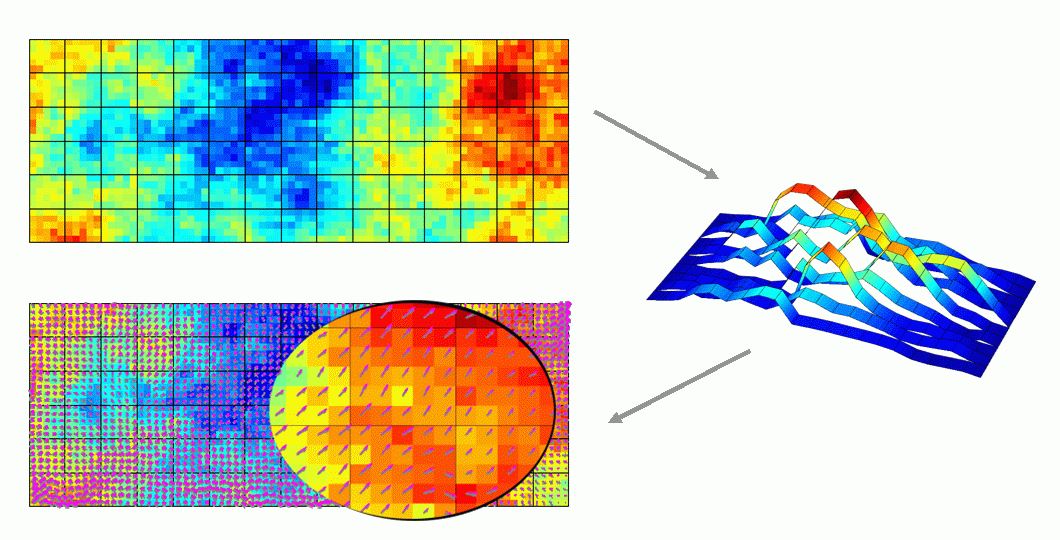In 2003, SINTEF set an ambitious goal to try to close this gap by developing a unique and novel suit of multiscale reservoir simulation tools. Through a project portfolio consisting of two concecutive strategic institute programs as well as a few researcher, expertise-building, and innovation projects, all funded by the Research Council of Norway, we started developing multiscale methods that would be applicable to grids of industry-standard complexity. Our work stood out from most other research on multiscale methods at the time, which focused almost exclusively on regular Cartesian grids.
The expertise developed in the GeoScale portfolio not only was the start of our development of MRST, but also layed the foundations for our subsequent development of what is state-of-the-art in multiscale reservoir simulation.
GeoScale: reservoir simulation on a geological scale
Modern methods for 3D geological modelling and reservoir characterization are leading industry to routinely build very large and detailed reservoir models; grid models of the subsurface geology currently range in size from 10 to 100 million cells and are growing. Such models pose a serious computational challenge to numerical reservoir simulators. Indeed, there is a steadily increasing gap between the level of detail seen in industrial geomodels and the capabilities of current flow simulators. This gap cannot be closed by incremental improvements to legacy simulators.
Contact person

Key facts
Project duration
2004 - 2010
Project type
Portfolio of projects: strategic institute projects, knowledge-building project, and researcher projects
Funding
- GeoScale - reservoir simulation on a geological scale (2004-2007)
- GeoScale - reservoir simulation on a geological scale, Part II (2008-2010)
- Streamline methods for automatic history-matching of production data (2003-2006)
- Multiscale simulation of highly heterogeneous and fractured reservoirs (2006-2009)
- Multiscale reservoir simulation (2004-2007)
Partners
NTNU, Shell
Relevant links
- Website for the GeoScale project portfolio
- Next generation multiscale methods for reservoir reservoir simulation (project that industrialized the technology in SLB's INTERSEC simulator)
Project team
-

Astrid Fossum Gulbransen
-

Ingeborg Skjelkvåle Ligaarden
-

Jostein Roald Natvig
-

Jørg E. Aarnes
-

Vegard Kippe
-

Vera Louise Hauge


